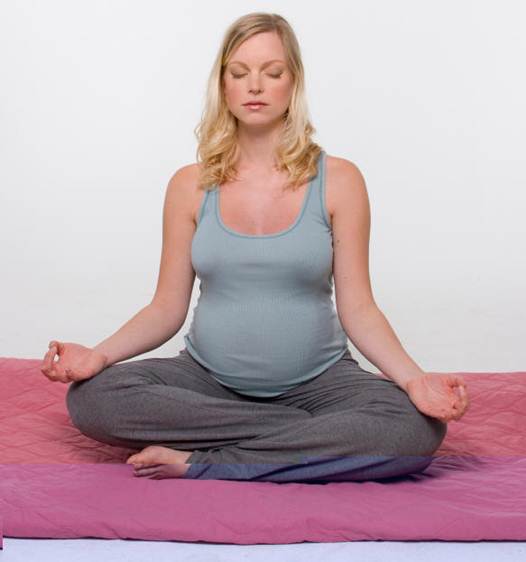The money you’re still spending on
that gym membership doesn’t have to go to waste just because you’re pregnant.
Learn how to navigate cardio, weights and class options to stay fit and feel
great in every trimester.
An hour of cardio
Usually flies by for me at the gym, thanks
to my secret motivational strategy: watching “Law & Order” reruns on the
club’s TV. I hop on the elliptical machine as the opening credits roll, and
before I know it, Sam Waterston is finishing his closing argument to the jury.
At least, that was the case before I got
pregnant. On some days in my first trimester, to my amazement, I’d poop out 10
minutes into the show- before the detectives even identified the body.
“Many active women are surprised at how
pregnancy affects their workouts,” says Renee M. Jeffreys, M.Sc., a
prenatal-fitness consultant in Milford, Conn., and co-author of Fit to Deliver
(Hartley & Marks). “But remember that these are normal, short-term
changes.”
So should you dial down your cardio? Are
certain machines off-limits? Can you still do Pilates? The answers depend
largely on your fitness level, which trimester you’re in and how you’re feeling,
Jeffreys says. But this much is certain: The gym is a great place to be
pregnant. If one cardio machine or strength exercise isn’t comfortable, there’s
always another one to try.

Can
you still do Pilates?
Getting yourself to the gym may take an
extra dose of motivation, but the payoff is huge. Consistent exercise during
pregnancy can minimize aches and constipation, help you sleep better and
lower your risk of excess weight gain, gestational diabetes and depression. You
may even end up having a shorter, less complicated labor. Developing good
workout habits during pregnancy will help you get your body back faster after
delivery, too.
Though my first trimester was rough going,
my second was a breeze and my third wasn’t half bad, either. With my stamina
back in those later months, I’d usually make it all the way through & Law
& Order episode at the gym (aside from a few bathroom breaks during
commercials).
Keep it classy
If you can attend prenatal exercise
classes, do. Not only are the workouts modified for pregnancy, but you also get
to bond with fellow moms-to-be (you might even get labor tips!). If your
favorite classes don’t come in the prenatal variety, it’s fine to keep going,
as long as you pay attention to how your body feels and limit your intensity so
you don’t overexert yourself.
Just make sure the instructor knows you’re
pregnant and is knowledgeable about modifications you can make, Jeffreys
advises. If your instructor hasn’t worked with pregnant women, find one who
has. Keep in mind that highly choreographed classes like step or hip-hop aren’t
the best choices for expectant women because they require quick direction
changes and excellent balance. Here, some common classes you’ll find at the gym
and what you need to know to take them while pregnant.
Pilates
Pilates helps maintain your abdominal
muscle tone, which will help support your growing belly, minimize back pain
and give you more oomph for pushing during labor. But mat classes can be
problematic after the first trimester because so much work is done lying on
your back; this position decreases blood flow to the uterus and placenta and
should be avoided. Either opt out of these exercises or use an angled foam
spine support (found in most Pilates studios but not many gyms); this will
keep your head higher than your belly.
Yoga
Yoga not only strengthens your core and
improves flexibility, but it also fosters a sense of calm with its gentle
movements and emphasis on breathing and meditation.
In the second half of your pregnancy, avoid
twisting too far in any direction, movements that tug on your belly, moves that
require you to lie on your back or belly for prolonged periods and inversions
like head and shoulder stands.

Water aerobics
Ah ... relief. You can’t trip and fall, you
won’t overheat, and for once you won’t feel like a big clod. No wonder water
aerobics is a third-trimester favorite. (Your joints will thank you!) Wear aqua
shoes so you don’t slip on the bottom of the pool.
Safe, effective cardio
When it comes to cardio exercise, Fit to
Deliver coauthors Karen Nordahl, M.D., an OB-GYN in Vancouver, British
Columbia, and Jeffreys have a rule of thumb: “If you were really active before
pregnancy, stay really active. If you weren’t, now is a good time to become
active.” For beginners, Nordahl recommends 30 minutes of walking three days a
week.
During pregnancy, you’ll need to scale back
on the intensity. Gauge yours using the Rate of Perceived Exertion (RPE) scale
from 0 to 10: Aim for an intensity between 3 and 5 (you should be able to talk
but not sing). Ignore heart-rate readouts on the cardio machines; they don’t
accurately gauge intensity because your blood volume increases during pregnancy
and your resting heart rate is much higher than normal. Try all the cardio
machines to find one (or more) that feels right for you.
Treadmill
Walking on the treadmill is ideal because
you can control the terrain. Add hills when you’re up to it; go flat if hills
trigger calf cramps. If you’re a runner, let your body tell you when it’s time
to switch to walking.
Elliptical
The elliptical trainer places little stress
on your joints. However, the motion may feel uncomfortable if you’re
experiencing symphysis pubic dysfunction (SPD), a pain in the front of your
crotch.
Stationary bike
An upright bike keeps you off your feet,
but a recumbent also offers back support (although in the third trimester your
belly might get in the way).